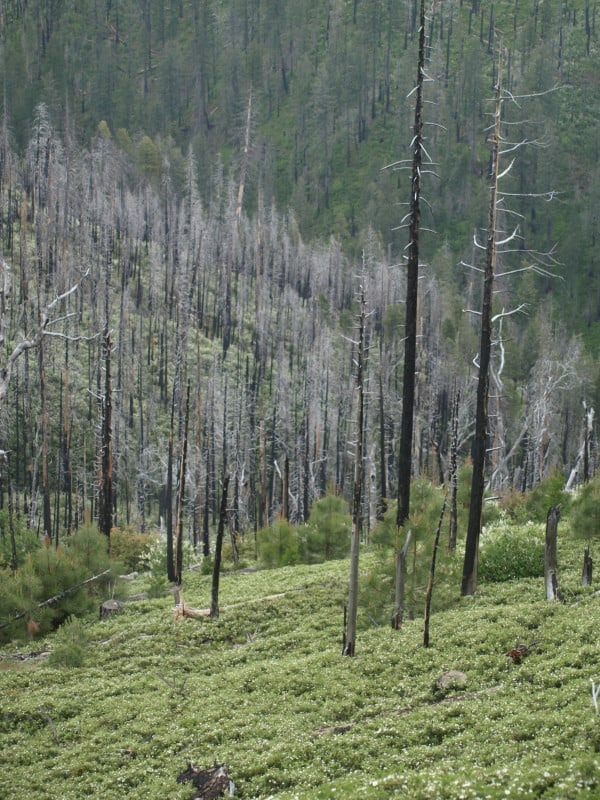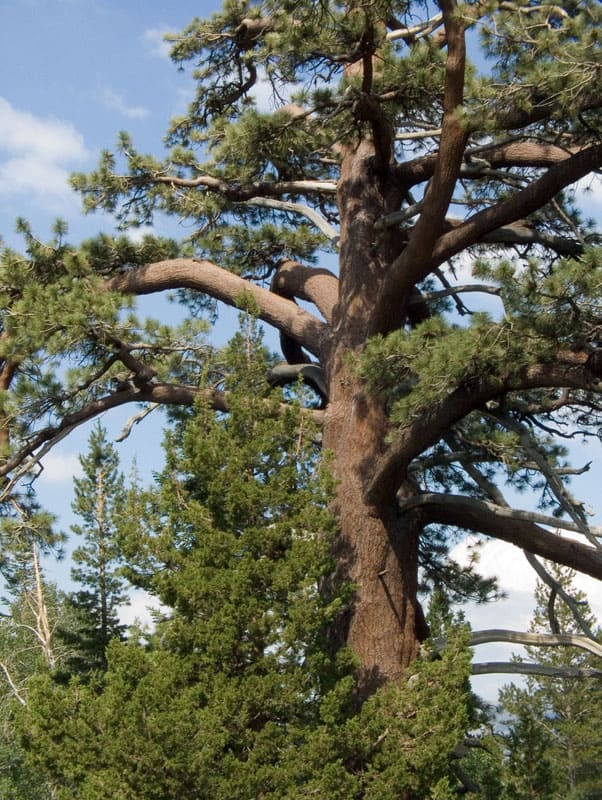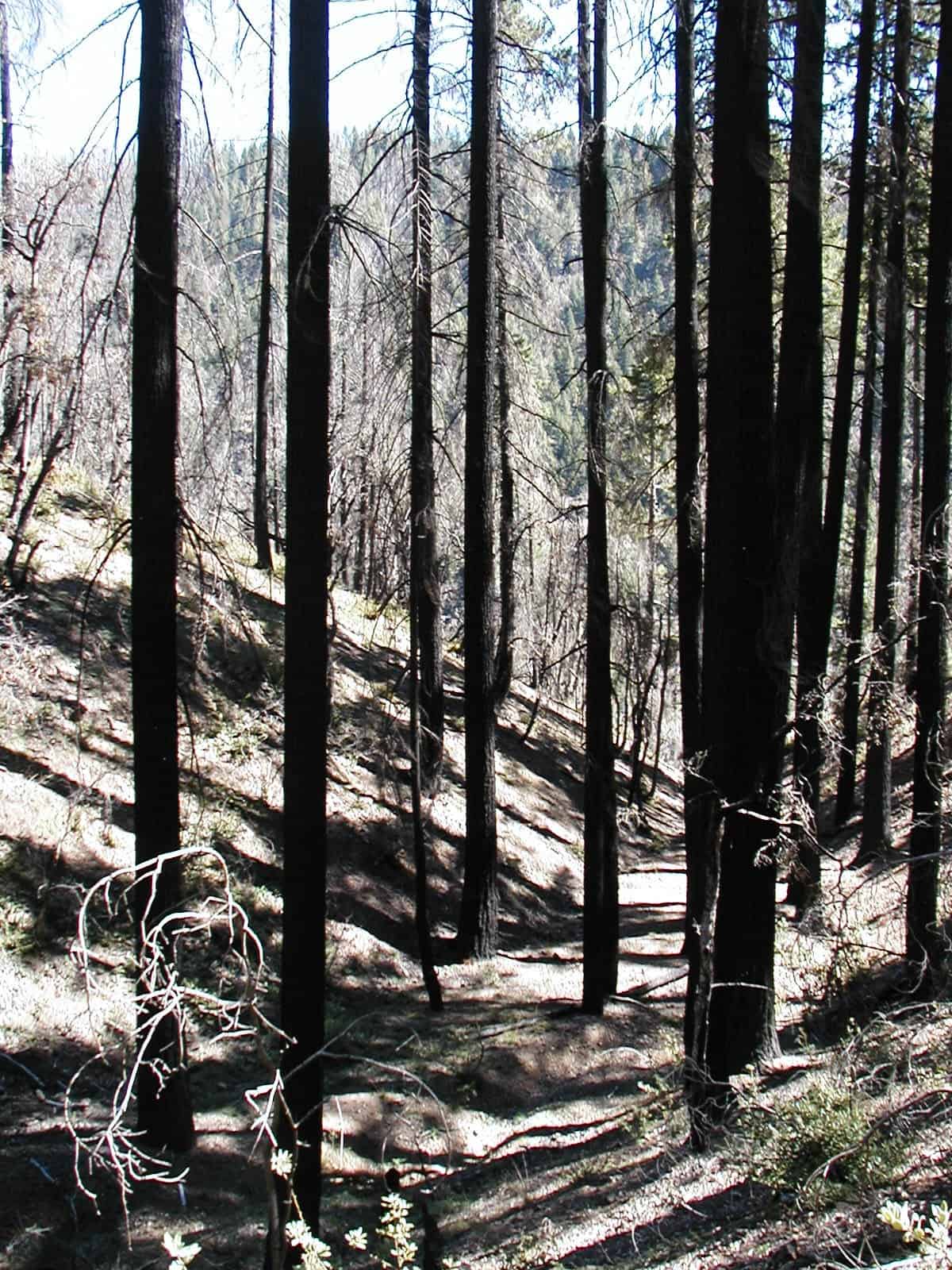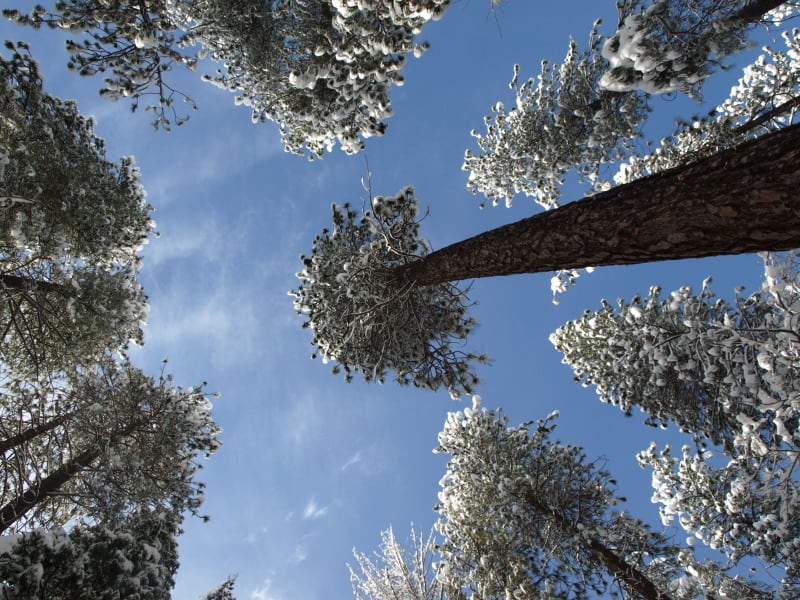This helicopter unit experienced significant dieback, even as the fallers returned multiple times. The marking guidelines allowed for cutting trees with low crown ratios, and with the Forest Service getting projects together so quickly (six months!), the bark beetles hadn’t run their course, yet. In addition to the snag specifications in the project’s plans, you can clearly see that there are a great many more snags now, than the plans required. Also important in this is that snag of certain sizes had to be cut and flown out, as part of the fuels treatment (a HUGE expenditure!) The Power Fire salvage project was halted by the Ninth Circuit Court, due to the new salvage marking guidelines, and a perceived need for more blackbacked woodpecker analysis. The cutting unit below was completed, though.
Also seen in the foreground is that nasty bear clover, which will dominate, until it is shaded out, or killed with herbicides. It is great to have this smelly carpet (AKA mountain misery) under a nice canopy but, in this case, it will hinder all trees from germinating and growing. Their roots can go 12 feet deep. Even the deerbrush is kept at bay by the bear clover.













